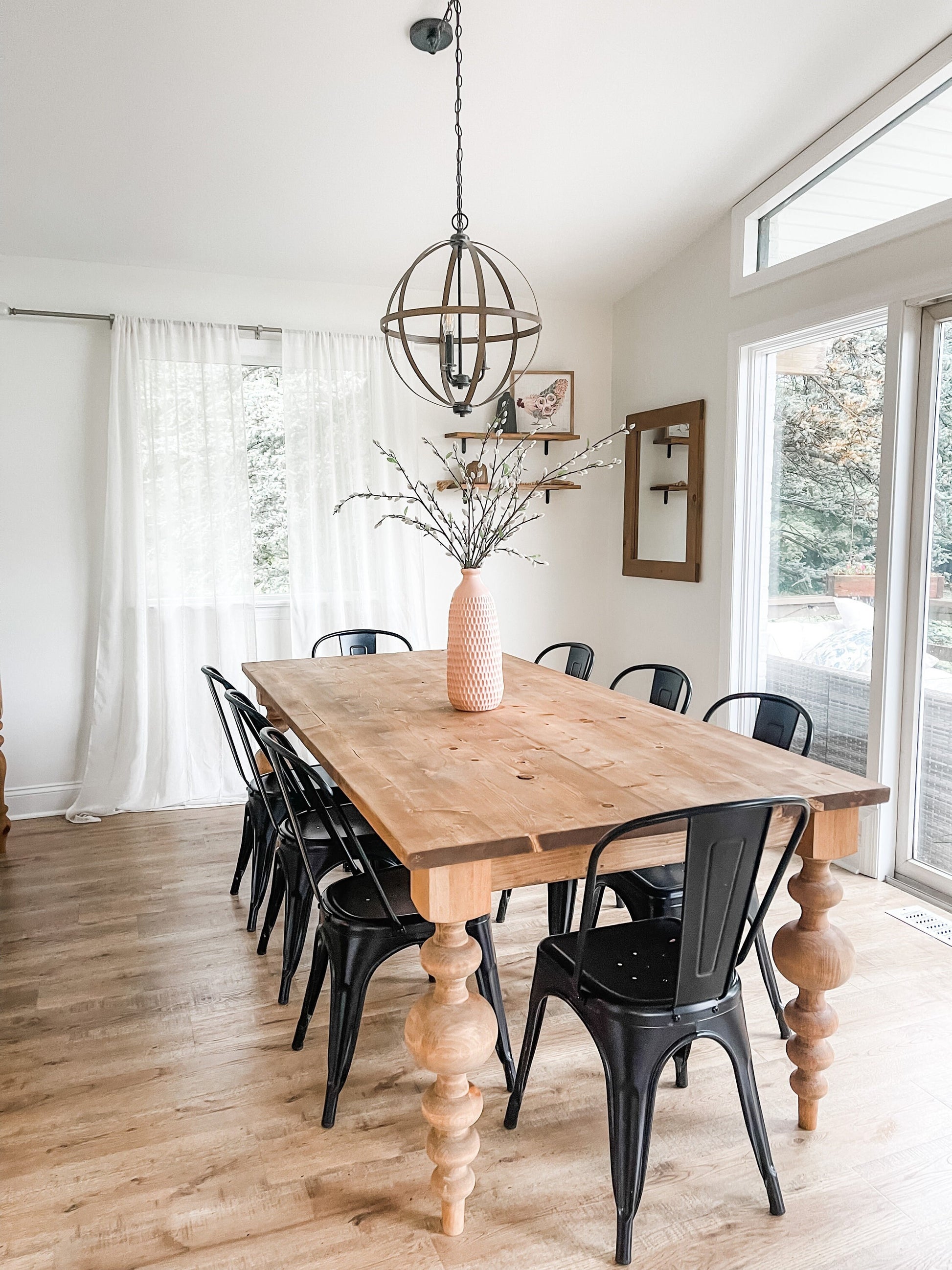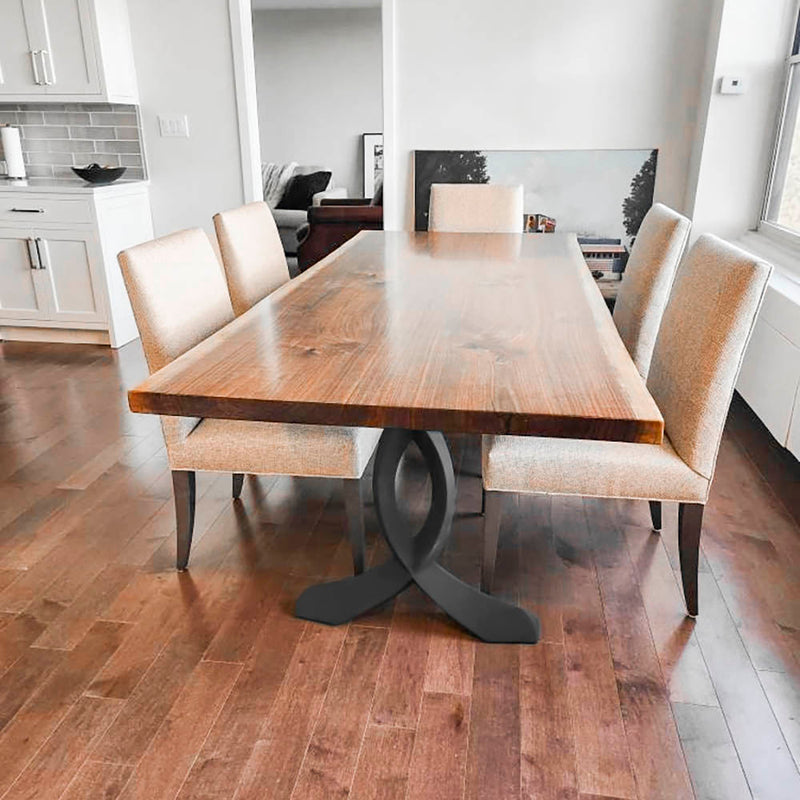The Impact of Dining Room Table Legs on Your Table's Overall Design
The Impact of Dining Room Table Legs on Your Table's Overall Design
Blog Article
From Typical to Modern: Find the Perfect Dining-room Table Legs for Your Design
While timeless designs such as cabriole and transformed legs evoke a sense of timeless refinement, contemporary styles like barrette and geometric options provide a chance for striking visual passion. As you consider these components, the concern remains: how can you flawlessly integrate these diverse leg designs to produce an unified eating experience?
Recognizing Table Leg Styles
The variety of dining space table leg styles can substantially influence both the appearances and performance of the area. Each leg style contributes one-of-a-kind visual elements and useful functions, satisfying varied design choices and use demands. Comprehending these styles is vital for choosing the best dining table that straightens with your total interior layout vision.
As an example, conical legs use a tidy, timeless appearance that can improve an area's beauty, while pedestal bases provide stability and make the most of legroom, making them perfect for smaller sized rooms. Hairpin legs, a trademark of mid-century contemporary style, present a commercial flair, enabling for a ventilated, open feel. Trestle legs evoke rustic appeal, giving durable support and a sense of timelessness.
In addition, the choice of materials plays a significant duty. Wood legs can bring heat and appearance, whereas steel alternatives frequently communicate a sleek, modern ambiance. Inevitably, comprehending table leg styles is essential for producing a cohesive eating location that reflects personal style while guaranteeing functionality and convenience. By attentively taking into consideration these components, you can improve both the aesthetic and functional charm of your dining room.
Standard Table Leg Options
When choosing dining-room table legs, typical choices typically symbolize timeless beauty and workmanship. These designs show an abundant heritage and a dedication to quality, making them perfect for those that value classic aesthetics.
One of one of the most legendary standard leg designs is the cabriole leg, defined by its elegant curved form. This layout often features attractive carvings and is most generally discovered in Queen Anne and Chippendale furnishings. One more popular alternative is the turned leg, which flaunts a collection of smooth, rounded shapes that supply a classic appearance while keeping security.
Additionally, the straight leg, while easy, uses a unadorned and strong framework that can blend effortlessly with a variety of tabletop designs. For those drawn to ornate describing, claw-and-ball feet legs stimulate a feeling of splendour and can serve as a sensational focal point in any kind of eating area.
Lastly, stand bases, although not purely legs, offer an alternative standard alternative that enables ample legroom and can be perfectly carved. Each of these traditional leg styles adds to the general setting of a dining space, marrying feature with aesthetic appeal.

Modern Table Leg Layouts
Modern table leg layouts use a varied range of designs that highlight tidy lines and cutting-edge products. These designs commonly focus on capability while working as striking focal factors within an eating area. Minimalist aesthetic appeals are widespread, with legs crafted from materials such as steel, glass, and crafted timber, which contribute to a modern and ventilated feeling.
One prominent design is the barrette leg, defined by its slim, tapered structure that provides stability without overwhelming the tabletop (dining room table legs). This design is commonly found in mid-century modern furnishings and can effortlessly enhance different table forms. One more fad is using geometric forms, where legs may handle asymmetrical or angular kinds, adding visual passion and a touch of artistry

Mixing Designs for Special Rooms
Frequently, homeowners look for to produce distinct eating rooms that show their personal design by mixing different layout components. This technique enables the unification of varied appearances, causing a harmonious yet distinct atmosphere. For example, matching you can check here a rustic wooden table with streamlined, modern metal legs can produce a captivating contrast that boosts the area's overall allure.
Furthermore, integrating vintage table legs with modern tabletops can evoke a feeling of background while maintaining a contemporary sensibility. Such combinations not only showcase private preference yet likewise urge creativity, permitting home owners to curate a room that really feels both individual and inviting.
Shade plays an essential duty in this mixing process; selecting table legs that match or contrast with the existing color pattern can boost visual passion. Whitewashed legs can soften the boldness of a dark table surface, producing a well balanced aesthetic.
Tips for Choosing the Right Legs
Choosing the right table legs is necessary for accomplishing both performance and visual appeal in your dining space. Begin by considering the overall design of your space. Traditional settings take advantage of legs that include elaborate carvings or transformed designs, while modern spaces might require streamlined, minimalist styles.
Following, assess the height and stability of the legs. dining room table legs. Typical table vary between 28 to 30 inches in height, so guarantee the legs complement this measurement for convenience. In addition, robust products, such as wood or steel, can boost security and long life
Examine the leg form also-- choices include directly, tapered, or stand layouts. Straight legs use a timeless appearance, while conical legs can add a touch of sophistication. Pedestal bases supply ample legroom and are optimal for smaller rooms.
Final Thought
In summary, choosing the ideal eating area table legs calls for cautious factor to consider of both standard and modern-day designs. Standard alternatives such as cabriole and transformed legs offer ageless beauty, while contemporary layouts like barrette and geometric shapes provide a contemporary touch. By balancing leg design, elevation, and material with the overall decoration, a natural and welcoming environment can be achieved. Ultimately, the chosen table legs need to mirror the wanted visual, improving the eating experience within see this page the room.
The variety of dining area table leg styles can dramatically influence both the aesthetic appeals and performance of the space. Ultimately, recognizing table leg designs is necessary for developing a cohesive dining area that shows personal style while ensuring usefulness and convenience.One of the most iconic conventional leg designs is the cabriole leg, identified by its stylish curved shape. Straight legs use a timeless look, while conical legs can add a touch of style.In recap, choosing the ideal dining space table legs requires careful factor to consider of both modern-day and traditional designs.
Report this page